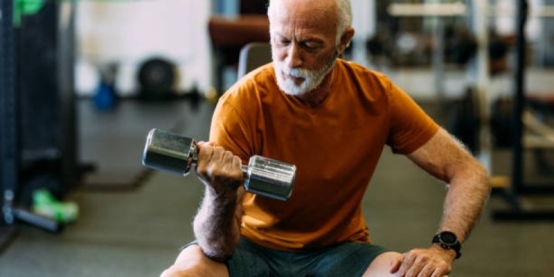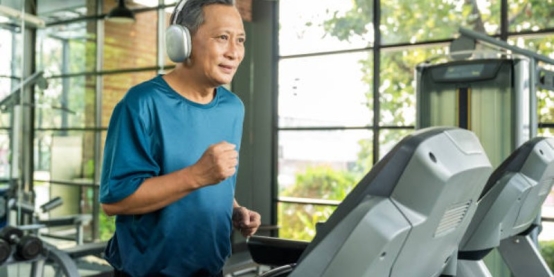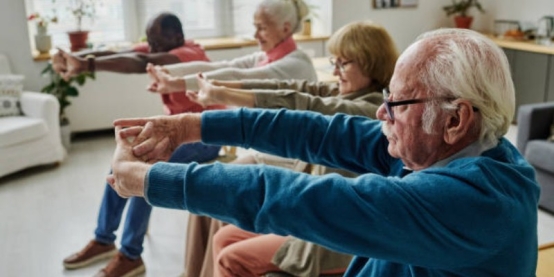5 Low-Impact Workouts for Older Adults to Stay Active
Getting older does not mean giving up on staying strong or healthy. Some people think exercise is only for young folks who want six-pack abs or to show off on social media. That's not true. For older adults, exercise is even more critical—but it has to be smart, safe, and effective.
The truth is that low-impact workouts are not soft or lazy. They are smart. They help keep the body active without placing excessive pressure on the joints. That's particularly important for individuals with arthritis, weak knees, back pain, or balance issues.
Why Older Adults Should Not Ignore Exercise
Let's be honest. Ageing comes with changes. Muscles get weaker. Bones lose strength. Balance gets shaky. The heart may not work as hard as it used to. But sitting around all day and doing nothing about it is not the answer. That's a fast track to poor health.

Low-impact workouts can help:
Improve heart health
Reduce the risk of falling
Keep joints flexible
Strengthen muscles
Support mental health
Manage weight
People over 60 who stay active are less likely to get long-term illnesses like heart disease and diabetes. According to the CentresCentres for Disease Control and Prevention, regular physical activity also helps older adults maintain their independence for longer and reduce the risk of disability.
Easy and Safe Workouts That Still Work
Some people think low-impact means no results. Wrong thinking. These exercises are gentle on the body, yet they get the job done. They wake up muscles, get blood flowing, and keep bones strong.
1. Walking
Walking is not just for getting from one place to another; it's also for maintaining good health. It is a full-body workout. It helps the heart, clears the mind, and strengthens the legs. Older adults should aim for at least 30 minutes of physical activity a day, five days a week. It can be broken down into smaller parts, such as three 10-minute walks.
Pro tip: Walking in nature can also help reduce Stress. A short walk in the park beats sitting in front of a screen all day, and even walking inside the house or around the block counts as exercise.
2. Chair Exercises
Some people are unable to stand or move around much. That's not an excuse to do nothing. Chair workouts help people move safely while sitting. These can include arm lifts, leg raises, and simple stretches.
Engaging in chair exercises for just 15 minutes a day can improve blood flow, muscle tone, and joint mobility. These workouts are ideal for individuals recovering from surgery, those dealing with arthritis, or those experiencing back problems.
3. Swimming and Water Aerobics
Water takes pressure off the body. That makes swimming one of the most effective low-impact workouts available. The water supports the body's weight, protecting the joints while still allowing for whole movement.
Swimming enhances lung capacity, improves balance, and benefits heart function. For people with joint pain, water aerobics is also a wise choice. Many local health clubs and YMCA centres offer water-based exercise classes specifically designed for older adults.

4. Stretching and Flexibility Routines
Tight muscles can cause pain, poor posture, and an increased risk of injury. Simple daily stretching can make a significant difference. Yoga or tai chi may seem slow, but they improve balance, flexibility, and peace of mind.
These types of movement also lower the risk of falling, which is one of the biggest dangers for older adults. A report from Harvard Health Publishing states that even brief sessions of tai chi can enhance balance and alleviate anxiety in seniors.
5. Strength Training with Resistance Bands
Who says strength training is only for bodybuilders? Older adults also need strong muscles, especially in the legs, hips, and core. These muscles assist with daily tasks such as standing up, climbing stairs, or carrying groceries.
Using light resistance bands is a great way to do this safely. Bands don’t put too much pressure on the joints, but they give the muscles just enough challenge. Doing this twice a week can boost strength, bone density, and confidence.
Things to Watch Out for Before Starting
Now let's talk real. Not every workout is right for everyone. Just because an exercise is labelled "safe" doesn't mean it fits every body type.
Here’s what older adults should keep in mind:
Consult a doctor before starting any new exercise regimen, especially if you have heart problems, joint issues, or other medical conditions.
Start slow. It’s not a race. The goal is not to win medals but to stay healthy.
Use the right gear. Comfortable shoes and loose clothes make workouts safer and more enjoyable.
Listen to the body. If something hurts, stop. Pain is a warning, not a test of strength.
Hidden Dangers of Being Inactive
Some people brag about staying home all day, sitting for hours, and watching shows while eating whatever they want. Then they wonder why they feel tired all the time or why their joints are stiff. A body that is not used will stop working well. It’s that simple. Too much sitting leads to:
Blood pressure problems
Weight gain
Depression
Heart disease
Type 2 diabetes
The World Health Organisation warns that physical inactivity is one of the leading causes of death and disability. Ignoring this is like playing games with your health, hoping for a good outcome.

Small Habits That Help
Exercise does not always mean going to the gym or following a strict plan. It can mean choosing to move more during the day. Older adults can improve their health by doing simple things:
Take the stairs instead of the elevator
Do light cleaning at home
Dance to music in the living room
Stretch during TV ads
Stand up and walk every 30 minutes
Even gardening or walking a pet can count as low-impact movement. The point is to keep moving and not let the body rest.
What Low-Impact Exercise Means
Low-impact does not mean low results. It means smart movement. It means choosing workouts that work with the body, rather than against it.
Older adults are not weak. They are wise. However, that wisdom should also include recognising the dangers of doing nothing. The goal is not to become young again. The goal is to stay strong, sharp, and steady.
That’s what low-impact workouts help with. They are the quiet helpers. The simple habits that protect the body, improve the mind, and bring peace into later years.